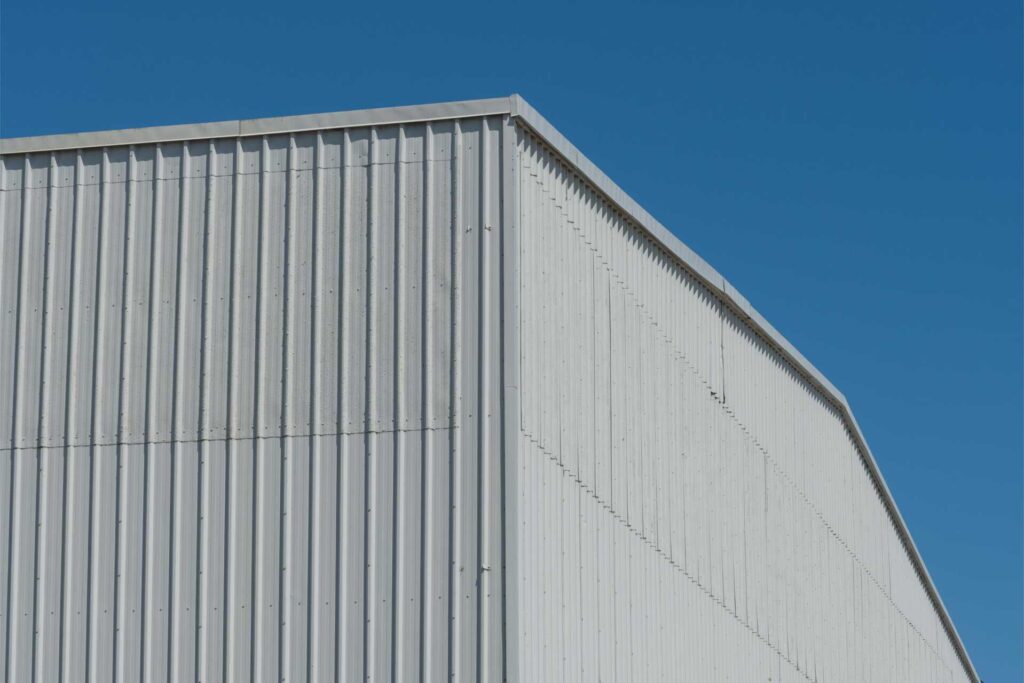
Contents
Imagine your industrial metal structures as a sturdy oak tree in a vast forest, standing tall and resilient against the elements. Now, consider the advantages of incorporating eco-friendly features into its design. These environmentally conscious choices enhance the longevity and durability of your building while paving the way for a more planet-friendly future. As you explore the options available, each providing distinct benefits, you’ll start to see how these practices can benefit your bottom line and positively impact the world around you.
Key Takeaways
- Cost savings through reduced operational expenses and lower utility bills.
- Environmental impact reduction with recycled materials and water-saving fixtures.
- Energy efficiency with solar panels, insulation, LED lighting, and smart systems.
- Green roofing for air quality, energy efficiency, and water conservation.
- Innovative design choices for aesthetic appeal and sustainability.
Benefits of Sustainable Features
When incorporating lasting characteristics into industrial metal structures, you can experience a range of benefits that enhance efficiency and reduce environmental impact. One of the key advantages is cost savings. Eco-friendly features like energy-efficient lighting and HVAC systems can significantly lower operational expenses over time. By reducing energy consumption, these systems cut down on utility bills and minimize maintenance costs due to their durable nature.
Furthermore, sustainable features play an essential role in reducing the environmental impact of industrial metal structures. For example, utilizing recycled materials in construction can help lower the carbon footprint of the building. Additionally, implementing water-saving fixtures and systems can contribute to conservation efforts and lessen the overall environmental strain.
These environmentally friendly practices benefit the immediate surroundings and showcase a commitment to sustainability, which can enhance the organization’s reputation among environmentally conscious stakeholders.
Energy-Efficient Options Available
Incorporating energy-saving options into industrial metal structures enhances operational performance and reduces long-term costs. When considering energy-efficient solutions for your industrial metal structure, here are some options to improve sustainability:
Solar Panels: Installing solar panels on the roof of your industrial metal structure can harness renewable energy from the sun to power your operations. This diminishes your reliance on traditional energy sources and lowers your electricity bills in the long run.
Insulation Options: Choosing the right insulation for your industrial metal structure is vital for maintaining a consistent internal temperature. Proper insulation helps in reducing heat transfer, thereby decreasing the need for excessive heating or cooling systems.
Energy-Saving Lighting: Upgrading to energy-saving LED lighting fixtures can significantly reduce electricity consumption. LED lights have a longer lifespan and consume less energy compared to traditional lighting options.
Smart Energy Management Systems: Implementing smart energy management systems allows you to monitor and control energy usage efficiently. These systems can enhance energy efficiency based on occupancy patterns and environmental conditions, further improving the energy efficiency of your industrial metal structure.
Green Roofing Solutions for Sustainability
To improve sustainability in industrial metal structures, consider implementing eco-friendly roofing solutions that offer environmental benefits and energy efficiency.
Green roofs, also known as living roofs, are a creative method of promoting sustainability by integrating vegetation on a building’s roof. These roofs provide various advantages, such as enhanced air quality, decreased heat island effect, and improved insulation properties.
Integrating solar panels on green roofs further enhances the energy efficiency of industrial metal structures. Solar panels capture the sun’s energy to produce electricity, decreasing dependence on traditional energy sources and reducing carbon emissions. Combining green roofing with solar panels allows you to establish a self-sustaining system that contributes to a more ecological environment.
Rainwater harvesting is another essential component of eco-friendly roofing solutions. By collecting and storing rainwater, industrial metal structures can decrease their reliance on municipal water sources for irrigation and other non-potable water requirements. This eco-conscious practice not only preserves water but also aids in managing stormwater runoff, thereby lessening the pressure on local drainage systems.
Innovative Architectural Design Choices
Consider creative architectural design choices to enhance the sustainability and efficiency of industrial metal structures. Incorporating eco-friendly materials and modern aesthetics into the design can significantly impact the building’s overall sustainability.
Green Walls: Integrate living walls into the design to improve air quality, reduce the urban heat island effect, and provide insulation, all while adding a touch of nature to the industrial facade.
Solar Panel Cladding: Utilize solar panels as cladding material to harness renewable energy while enhancing the building’s visual appeal with a sleek and modern look.
Daylighting Strategies: Implement large windows, skylights, and light shelves to maximize natural light penetration, reducing the need for artificial lighting and improving energy efficiency.
Recycled Steel Elements: Incorporate recycled steel beams, columns, and trusses into the structure to reduce environmental impact, promote circular economy practices, and achieve a contemporary industrial aesthetic.
Customization for Eco-Friendly Building Practices
Customizing industrial metal structures for eco-conscious building practices involves tailoring green features to enhance efficiency and reduce environmental impact. When selecting eco-friendly materials, consider options like recycled steel, which reduces the need for new resources and minimizes waste.
Environmentally conscious construction techniques, such as pre-engineered components and modular construction, can enhance material usage and decrease energy consumption during the building process.
Incorporating renewable energy sources like solar panels can further improve the sustainability of industrial metal structures. These additions reduce reliance on traditional power grids and contribute to long-term cost savings and environmental benefits.
Additionally, designing structures with features like green roofs or rainwater harvesting systems promotes biodiversity and reduces water runoff, benefiting both the environment and the surrounding community.
Customization for eco-friendly building practices extends beyond the initial construction phase. Implementing smart technologies like energy-efficient HVAC systems and lighting controls can enhance operational efficiency and reduce overall energy consumption.
Regular maintenance and monitoring of these systems are crucial to maintaining ongoing environmental performance and adherence to eco-friendly practices.
Review
Opting for eco-friendly features in industrial metal structures is crucial for maximizing cost savings, reducing environmental impact, and promoting eco-conscious practices.
You can develop a highly efficient and environmentally aware industrial building by integrating energy-efficient alternatives, green roofing solutions, creative design selections, and tailored practices.
Embrace these eco-friendly features and witness your operational expenses plummet like a meteor crashing to Earth, impacting both your bottom line and the planet.
Recent Posts
3 Tips for Personalized Metal Garage Solutions
Finding personalized metal garage solutions can transform your cluttered space into a functional haven. By
Guide to Lasting Metal Structures for Homes
Imagine a sturdy metal garage standing proud against the fiercest storms, much like a lighthouse
What Are Affordable Metal Garage Options for Farms?
Imagine you’re managing a bustling farm like Smith’s Acres, where every inch of space counts.




